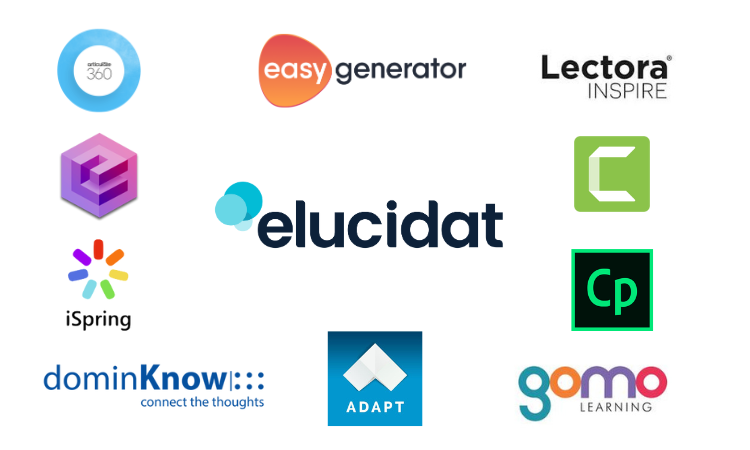Refresher Training: The Complete Guide
8 minute read
With increasingly busy lives, juggling demands of the home and workplace, it’s only normal that we find ourselves forgetting things along the way. We know from research and experience that the brain lets go of information that we don’t need to access often and that the best way to retain knowledge that we do need is through repetition.
This is why refresher training, little and often, can be such a powerful tool for businesses. Empowering your employees to revisit topics and build on their existing knowledge can help them to feel more confident, make less mistakes and improve the overall efficiency of your business.
Read on to learn more about:
- What refresher training is
- Why it’s important
- The benefits of refresher training
- Signs that your business needs refresher training
- Top tips on how to conduct refresher training
What is refresher training?

Refresher training is coaching or teaching on a specific subject that learners have already encountered, that’s designed to jog their memory and boost their knowledge on the topic.
This type of training is useful not only for keeping the memory sharp, but also for ensuring that your employees have the most up-to-date information at their disposal., especially if it’s on a subject that is changing frequently.
Why is refresher training important for employees?
When it comes to training, teaching something once is often not enough. This is particularly true for complex theories or processes which can take a long time to master.
It’s common for learners to forget a large proportion of what they have learned almost instantly, with even more knowledge on the topic fading over time. It’s estimated that learners can forget as much as 90% of what they learn over a period of a month, which highlights the importance of refresher training.
Refresher training is also a great way to ensure employees are following company best practices and adhering to important procedures, especially when it comes to compliance. Failing to comply can lead to employee mistakes, and in more serious cases, sanctions or penalties from external regulators.
What are the benefits of refresher training?
There are numerous advantages both for employees and the business, which include:
1. It helps employees to make less mistakes
Forgetting how to do something or the right steps to follow in a process can lead to guesswork and mistakes. Ensure your employees are armed with the knowledge and training they need to ensure that these behaviors become second nature.
2. It can boost employee confidence
Fewer mistakes will mean your employees perform better, experience fewer difficulties, and feel happier at work. Not only will your employees benefit from this, but your customers, too.
3. It makes employees more productive and efficient
More confident and assured employees make for more productive work. Refresher training helps employees to stay at the top of their game and continuously improve.
4. It ensures compliance
Refresher training can help to ensure rigorous compliance, with regular reminders on the dos and don’ts and updates on new regulations and policies that need to be adhered to.
5. It can highlight gaps in knowledge and inform future training programs
Introducing quiz or assessment modules within your refresher training is a useful way to gauge how well your employees understand different topics. If employees are repeatedly struggling in one particular area or module, it can help you to plan the next training session to prioritize.
6. It helps your employees to excel
A great refresher training program allows employees to improve and develop their skills on an ongoing basis, which can help to boost their motivation and desire to learn.
Refresher training can also provide employees who are particularly competent or knowledgeable in a particular area an opportunity to teach others, which can help to build important communication and leadership skills.
7. It promotes a positive learning culture
Refresher training promotes a positive learning culture across the organization that supports employees’ progression and encourages them to develop their skills. Not only does this help to keep your organization operating at the highest possible level, but it also shows employees that you care about their professional development.
Learn more about how to promote a learning culture in your organization.
Does your business need refresher training?
Is refresher training a good fit for your business? There are a few telltale signs that suggest that introducing refresher training could be beneficial, including:
1. Frustrated employees
If your employees appear increasingly disgruntled and dissatisfied, this could indicate that they’re not getting the support or training that they need. Take time to speak to them to understand where they would benefit from some additional training and ensure they have clear objectives that they are working towards.
2. A rise in customer complaints
An increase in customer complaints is a worrying warning sign that all is not well. If you’ve received an influx in new complaints, dissect them to identify common themes – this can help to inform which areas to focus on for your refresher training. Regular refresher training is particularly important for employees in customer-facing roles, so implementing this proactively can help to prevent customer satisfaction rates from slipping.
3. Low technology adoption rates
Investing in new technology can be a substantial outlay for businesses, so it’s vital that user adoption rates are high to justify the costs. If employees aren’t using the tools or software that you’ve introduced or you’ve seen a drop off over a period of time, it’s a good idea to introduce some refresher training that gets to the bottom of why.
4. Frequent or recurring mistakes
Are you employees making the same mistakes time and again? This is likely a sign that they are not learning from their mistakes or that they simply don’t know how to rectify them. Refresher training can help them to understand how these mistakes can be avoided and provide helpful tips and best practices.
5. Compliance or cybersecurity concerns
Has there been a change in legislation or guidelines that your company now needs to comply with? Or are you concerned that employees have become too relaxed when it comes to following your compliance or cybersecurity procedures? If that’s the case, design a refresher course for your employees to follow to ensure compliance.

When it comes to business-critical training such as compliance and cybersecurity, it’s best practice to proactively provide ongoing training, as prevention is always better than cure. You can find our roundup of the best compliance training examples here.
How to conduct refresher training
Once you’ve decided that your employees need refresher training, what’s the best way to implement it? Here we’ll take you through the steps you need to take to successfully set up and deliver your training.
1. Decide on your delivery method
The best fit for your organization will depend on a number of factors including company size, setup and the learning styles of your employees. Let’s take a closer look at some of the options:
- Face to face training
This can be a great option if your employees work primarily in the office or together in-person and if there are hands-on elements required as part of the training. This type of training is beneficial for interactive Q&A type sessions as it allows for open discussion.
One of the key downsides of face to face learning is the cost and it can also be difficult to scale, especially if you’re hosting refresher training sessions on a biweekly or monthly basis.
- Elearning
Elearning can provide an ideal solution for companies looking to create scalable, engaging content, quickly. It’s convenient for your learners too, as they can access it from a central location and complete it in their own time.
While the disadvantages of elearning are few and far between, it can be difficult to find the best authoring tool for your objectives. Some will require authors to have a certain level of pre-existing skill, while others may have limited template and design options. Check out our handy guide to the best elearning authoring tools here.
This approach offers the best of both worlds: structured face to face learning and flexible elearning modules. Blended learning allows you to combine the best elements of both styles and adapt it to your learners to give them the best possible learning experience.
Read more about the pros and cons of online learning vs face to face here.
2. Determine your audience
A critical stage of any elearning planning is understanding who your audience is and what the right level is to pitch it at. Consider what level of knowledge your learners already have on the topic. How long ago it was that they had their last training session on this topic? Are there common mistakes they are making that you need to factor into the training?
3. Review existing content
Take stock of your existing training content to understand if there are elements that you can repurpose or reuse in your refresher training. While your refresher training should cover all the basics, it should also put your learners to the test, so make sure each session gets incrementally more challenging.
4. Create new content
Work with your Subject Matter Experts to produce new content for your refresher training that delivers on your key messages. Build your course content from scratch or take advantage of our extensive library of elearning templates that can adapt to make your own.
Take inspiration from our showcase page where you can explore different elearning formats and examples that you can utilize for your training.
5. Schedule your course
Once your content is ready, you’re all set! Upload your content to your LMS and choose how you want your learners to access it, e.g. via link invites or individual user logins. Be sure to set targets for your learners to ensure they’re completing their training in a timely manner and keep an eye on performance so you can make tweaks to your content along the way.
Using Elucidat for refresher training
Elucidat makes it easy for authors of all levels to produce awesome refresher training. From video tutorials and quizzes to microlearning and scenario-based learning, we’ve got heaps of handy templates for you to use, all you have to do is provide the content!
Ready to get started? Book a demo and we’ll get you set up with a free trial today!



